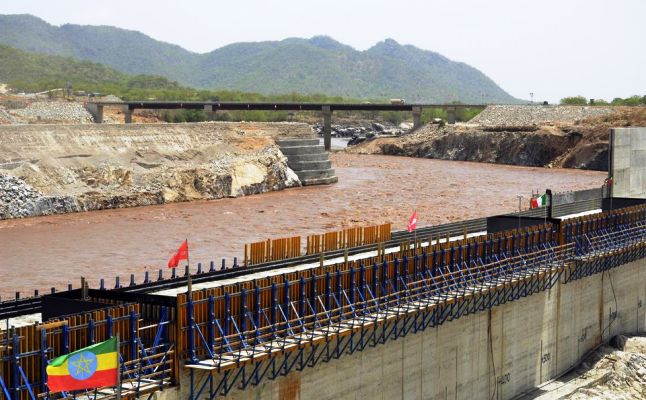Nile Basin journalists trained on water issues
By Tesfa-Alem Tekle
August 2, 2016 (ADDIS ABABA) – The Stockholm International Water Institute (SIWI) held a media training for journalists drawn from four of the Nile Basin countries.

Organizers said the objective of the training was to contribute to the emergence and consolidation of constructive media reporting about the Eastern Nile basin.
During the training, presentations were given on ways how journalists should cover on Nile issues including on how they could use the media to promote cooperation to support national and regional politicians could reach in a consensus on disputes or issues related with the Nile water resource.
It was emphasized that journalists must promote and disseminate an up-to-date and accurate reports regarding developments on political, economic and environmental issues related to the River Nile.
The training also intended to promote wider awareness and enhance knowledge and expand understanding on cooperation opportunities and the reward could be gained out of joint collaboration on water management and development.
Participants interacted with a number of experts on areas that covered on Ethiopian Nile dam’s technical, legal, economic perspectives, on the dam’s trilateral process as well as on opportunities and challenges on sub-basin cooperation.
A number of participants from different countries told Sudan Tribune that the training was incredibly helpful.
They said the training has facilitated an improved understanding among the journalists on the challenges and opportunities of water cooperation.
Trained Journalists vow to report in a responsible way and to further provide the public in their respective countries factual information to clear long-standing confusion regarding Ethiopia’s massive dam project.
The journalists vow to use their respective media to promote the benefits of multi-lateral cooperation in the various Nile water related sectors.
The Nile Basin Initiative (NBI) recognizes media engagement as a strategic partner in fostering Nile cooperation for the sustainable management and equitable utilization of the shared Nile Basin water resources.
NBI says it has registered remarkable achievements in fostering mutual understanding and appreciation among basin states and non-governmental stakeholders, of the fragility, sensitivity and hydro-politics of the River Nile since its launch in February 1999.
VISIT TO GERD
The Group of journalists has also paid a visit to the construction site of the Grand Ethiopian Renaissance Dam (GERD) where they spent a night.
Up on arrival the journalists were briefed on the over all view of the giant structure by project manager, engineer Simegnew Bekele.
The regional media team which also comprises 9 journalists from Egypt took over a half-day long tour at the site where they witnessed the current progress of the major construction development works undergoing.
This the first time for a team of Egyptian journalists to pay a visit in GERD since it’s launch in 2011.
Most of the journalists told Sudan Tribune the visit has helped them witness the reality on ground and further obtain first-hand information on the dam’s current status.
Haitham Mohamed, an Egyptian journalist said he had misconception on the project and the visit had helped him to open his eyes to fix the fallacy.
Before the visit Mohamed said he used to consider the dam project as an absolute threat to Egypt’s water security.
“I thought the construction of the dam would hurt Egypt but now I discover that is not the case” he told Sudan Tribune.
“After I talked to the experts and engineers including the project manager, I have come to believe it is a crucial project which Nile basin countries should rather cooperate in order to enhance their development efforts” he added.
When completed, the $4.1 billion dam project, which is being built along the Nile in Benishangul Gumuz region near the Sudanese border, will have a power generation capacity of 6,000 megawatts.
The dam project according to project manager, Engineer Simegenw Bekele, is little over 50% completed but experts told Sudan Tribune that it will soon reach 70% completion mark when turbines that are needed to generate power are installed.
Ethiopia which is investing billions of dollars on building a number of hydro-power plants, aims to become a renewable energy hub of the region.
It plans to export large amounts of clean and cheap hydro-power-processed electricity to its neighbors, other African countries and even to the Middle East and beyond.
The ambitious plan is part of the horn of Africa nation’s efforts to propel in becoming a middle-income country by 2025.
Although construction of the GERD is seen by Ethiopians as having a vital role in transforming the economy of the country and alleviate poverty, Egyptians however view the project as a potential threat to their water security.
The Nile River is a lifeline to some 80% of Egyptians and the desert North African nation fears Ethiopia’s huge dam project will ultimately diminish its historic water rights.
In 2013, Ethiopia and Egypt have been locked in a bitter war of wards after Egyptian politicians were caught on camera proposing sabotage, including an air strike to halt the project.
However, tensions eased after Cairo and Addis Ababa engaged in a number of positive discussions along with Sudan which led to a cooperation deal signed in March 2015 in Khartoum. Ethiopia insists the dam will not harm the interests of Sudan and Egypt rather provide economic benefits.
Ethiopia’s Nile dam will be Africa’s largest and the world’s 8th biggest if finalised. Ethiopia is constructing the mega project from its own coffers to be completed in 2017.
(ST)
